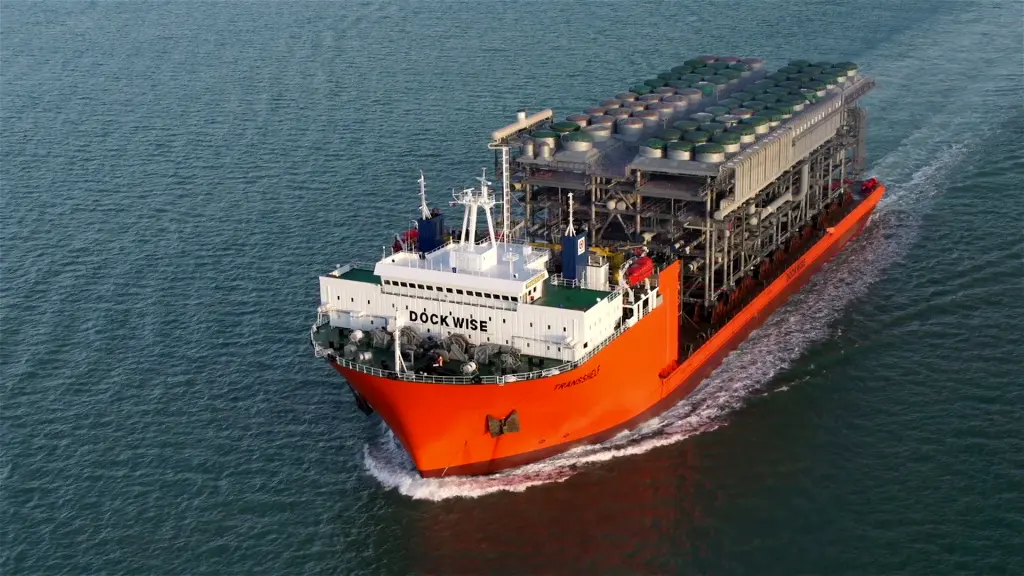IMO and GHG: First steps on pathway to decarbonisation

After two weeks of detailed discussions at the International Maritime Organization about how to respond to the Paris Agreement, what do we have? We have a plan for the first step of a plan that is itself part of a bigger plan. That may seem unkind, but don’t be fooled into thinking the IMO won’t deliver, and the signal is clear: IMO will come up with a framework to set shipping on a pathway to decarbonisation in the second half of the century.
The bigger plan is the IMO’s agreed ‘roadmap’ for its strategy to control greenhouse gas (GHG) emissions from international shipping. The first step of that plan is an initial IMO strategy, to be agreed in 2018.
Getting there won’t be easy as it will require finding a way to reconcile two seemingly mutually exclusive principles, namely the Common but Differentiated Responsibilities (CBDR) for developing and developed countries, and the IMO’s principle of no more favourable treatment (NMFT) because IMO regulations must apply equally to ships of all flags to be effective. It will be hard, but not impossible because the IMO already managed to do this in 2011 when adopting a new Chapter 4 to MARPOL Annex VI regulating ship energy efficiency.
Last week’s 71st session of the IMO’s Marine Environment Protection Committee was preceded by a week-long meeting of the Intersessional Working Group on Reduction of GHG Emissions from Ships (ISWG-GHG). The task of that meeting, and MEPC 71, was to draw up the initial IMO strategy under the roadmap. This is important as the IMO needs to communicate its intentions and response to the Paris Agreement to the United Nations Framework Convention on Climate Change (UNFCCC) in late 2018.
The outcome, after two weeks of deliberations and position statements, was agreement on a draft outline for the structure of the initial IMO strategy in 2018.
The initial strategy is set to include:
– Preamble/introduction/context including emission scenarios
– Vision
– Levels of ambition / Guiding principles
– List of candidate short-, mid- and long-term further measures with possible timelines and their impacts on States
– Barriers and supportive measures; capacity building and technical cooperation; R&D
– Follow-up actions towards the development of the revised Strategy
– Periodic review of the Strategy
In order to put in place this initial strategy and have it agreed at MEPC 72 in April 2018, there will be two more ISWG-GHG meetings, the first in late October 2017, and the second in early April 2018, shortly before MEPC 72.
Although discussions remain at a high level for now, a few signals are emerging about what we may expect:
- Shipping will be expected to play a part in helping to realise the goal of the Paris Agreement to keep the global average increase in temperatures below 2 and preferably to no more than 1.5°C.
- To achieve this, GHG emissions from shipping must start declining as soon as possible and the sector must decarbonise in the second half of the century.
- A new study presented to the ISWG-GHG and MEPC 71, using the same methodology as the Third IMO GHG Study 2014, showed that shipping transport work has grown markedly slower than in previous years and hence this study had significantly lower projections for maritime GHG emission projections under the business as usual emission estimates for the period 2012 to 2050 than the Third IMO GHG Study. This led to considerable debate about how to deal with data uncertainty as a basis for decision-making.
- The IMO will have a battle on its hands to agree on quantified ambition levels in 2018 because many think they must be evidence-based and there won’t be reliable data yet (the IMO’s ship fuel consumption data collection only starts in 2019).
- Many support the industry paper proposing setting non-binding aspirational targets similar to those set by countries under the Paris Agreement, and to adjust the targets as more data become available. There is some doubt, however, if this is compatible with IMO’s ‘modus operandi’, which is to set specific regulatory targets and then agree on measures to achieve them.
- In addition to CO2, there seems to be growing consensus to include emission of methane associated with LNG and also volatile organic compounds (VOCs) from ship’s cargo in a definition of GHG emissions from shipping, but not black carbon because it is not a gas.
- Initial work at the IMO to reduce GHG emissions from shipping should build on the existing legal framework to enhance energy efficiency, but longer term the IMO needs to pursue the development of zero-carbon or fossil free fuels.
- If, as expected, a large portion of the global fleet chooses to comply with the 2020 sulphur limit by using low sulphur fuels, the increase in fuel cost will be a powerful market signal to improve fuel efficiency.
What does this mean for IBIA’s members, who include both suppliers and consumers of fuel, and associated services?
The upshot of it is that global sales of oil-based bunker fuels may have peaked in 2008, because even if global trade grows between now and 2025, existing IMO policies to enhance ship efficiency may stem any overall growth in fuel consumption.
By 2025, new IMO instruments and emission reduction targets may have been agreed, and if you are planning to stay in business beyond 2050, you must find a way to supply and/or consume fuels that are carbon neutral.















![AIRBUS A380 [MORE THAN 600 PASSENGER’S CAPACITY PLANE]](https://cdn.tinn.ir/thumbnail/4jCp4EQvCU0b/IjHVrSYQrIAqIzXuTzADR7qLYX4idQT4nfq__26E5SCUPLMqfhWkWajvuO9Wfq1ql1TjV4dhkrHliNQU82kMpo2NNftT_NGEwHc9KXtN_rk731bmifa2IQ,,/airbus-a380-structure1.jpg)

Send Comment